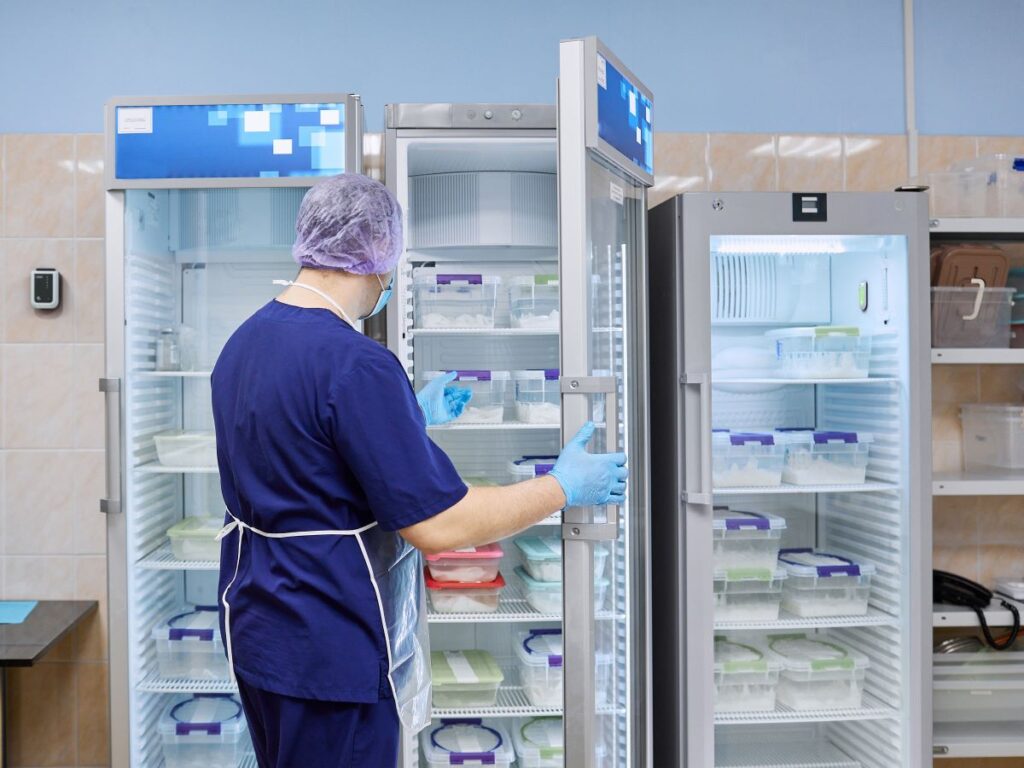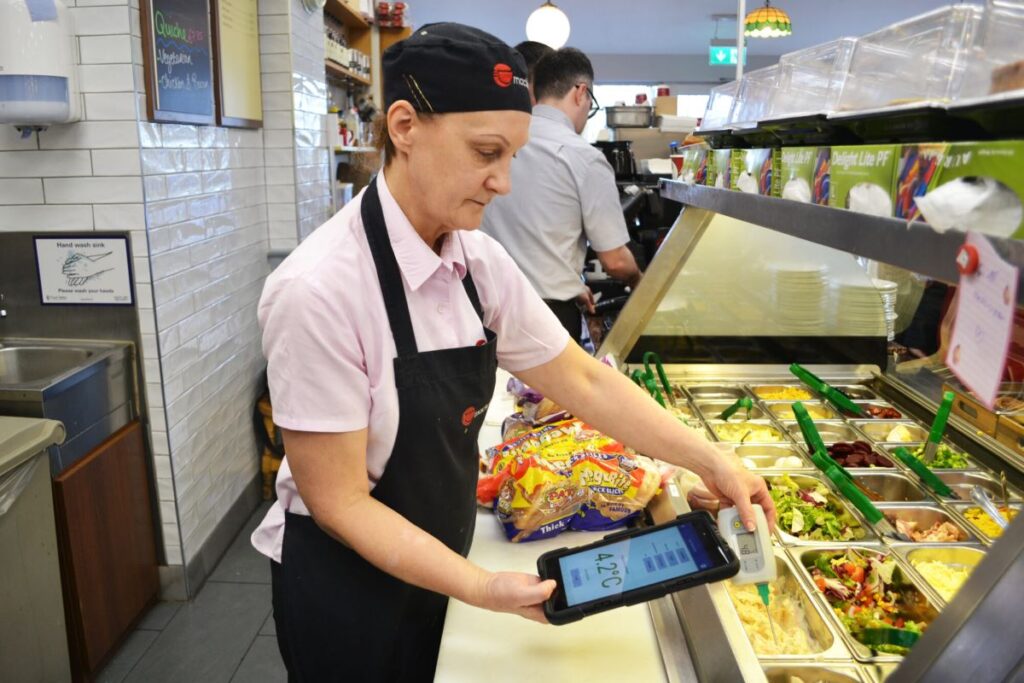In today’s fast-paced world, businesses are increasingly reliant on technology to streamline operations and enhance efficiency. One area where this is particularly evident is in temperature monitoring. Wireless temperature monitoring systems have emerged as a vital tool for various industries, from food and beverage to pharmaceuticals. This article delves into the numerous benefits of investing in these systems, illustrating how they can improve operational efficiency, ensure compliance, and enhance product quality.
Enhanced Operational Efficiency
One of the primary advantages of wireless temperature monitoring systems is their ability to significantly enhance operational efficiency. Traditional temperature monitoring methods often involve manual checks, which can be time-consuming and prone to human error. In contrast, wireless systems automate this process, allowing for continuous monitoring without the need for constant manual intervention. This shift not only streamlines operations but also fosters a more proactive approach to temperature management, ensuring that potential issues are identified and addressed before they escalate into costly problems.
Real-Time Data Access
Wireless temperature monitoring systems provide real-time data access, enabling businesses to monitor temperature fluctuations instantly. This immediacy allows for rapid responses to any deviations from set parameters, minimising the risk of spoilage or damage to sensitive products. For instance, in the food industry, maintaining the correct temperature is crucial for food safety. By receiving alerts in real-time, businesses can take immediate action, such as adjusting refrigeration settings or relocating products. Furthermore, the data collected can be analysed over time to identify trends and patterns, allowing for more informed decision-making and strategic planning regarding inventory management and storage practices.
Reduced Labour Costs
By automating temperature monitoring, companies can also reduce labour costs associated with manual checks. Employees can focus on more critical tasks rather than spending time on routine temperature readings. This not only optimises workforce efficiency but also allows for better allocation of resources, ultimately contributing to cost savings and improved productivity. Moreover, the integration of wireless systems can lead to enhanced employee satisfaction, as staff are relieved from monotonous tasks and can engage in more meaningful work that contributes to the overall success of the organisation. As a result, businesses can cultivate a more motivated workforce, which is essential in today’s competitive market.
Improved Compliance and Reporting
Compliance with industry regulations is paramount for businesses, particularly in sectors such as healthcare and food services. Wireless temperature monitoring systems simplify the compliance process by providing accurate and consistent data logs that can be easily accessed for reporting purposes.
Automated Record Keeping
These systems automatically log temperature data at specified intervals, creating a reliable record that can be invaluable during audits or inspections. This feature not only saves time but also ensures that businesses can demonstrate compliance with relevant regulations. In industries where temperature control is critical, such as pharmaceuticals, having a comprehensive and accurate record can prevent costly fines and damage to reputation.
Enhanced Traceability
In the event of a temperature-related incident, wireless monitoring systems offer enhanced traceability. Companies can quickly identify when and where a temperature deviation occurred, allowing for swift corrective actions. This level of traceability is essential for maintaining consumer trust and ensuring product safety, particularly in sectors that deal with perishable goods.

Increased Product Quality
Investing in wireless temperature monitoring systems can lead to a noticeable improvement in product quality. By maintaining optimal temperature conditions, businesses can ensure that their products retain their intended quality throughout the supply chain.
Minimising Spoilage and Waste
Temperature fluctuations can lead to spoilage, particularly in the food and beverage industry. By using wireless monitoring systems, businesses can minimise the risk of spoilage by ensuring that products are stored and transported at the correct temperatures. This not only protects the integrity of the product but also reduces waste, contributing to a more sustainable operation.
Consistent Quality Control
Consistency is key in maintaining product quality. Wireless temperature monitoring systems provide businesses with the ability to enforce strict quality control measures. By continuously monitoring temperature conditions, companies can ensure that every batch of product meets the required standards. This consistency is particularly important in industries such as brewing, where even slight temperature variations can affect the final product’s taste and quality.
Cost Savings and Return on Investment
While the initial investment in wireless temperature monitoring systems may seem significant, the long-term cost savings and return on investment (ROI) can be substantial. By reducing spoilage, minimising waste, and improving operational efficiency, businesses can see a quick return on their investment.
Lowered Insurance Premiums
Many insurance companies offer reduced premiums for businesses that implement robust monitoring systems. By demonstrating a commitment to maintaining product quality and safety, companies can negotiate lower rates, further enhancing the financial benefits of investing in wireless temperature monitoring.
Long-Term Savings
In addition to immediate cost savings, businesses can enjoy long-term financial benefits. By reducing spoilage and waste, companies can improve their bottom line over time. Furthermore, the enhanced efficiency gained from automated monitoring can lead to increased productivity, allowing businesses to grow without the need for proportional increases in staffing or resources. Visit https://heas.health.vic.gov.au/resources/plan-a-menu/reducing-food-waste-at-your-service-oshc/ to get about reducing food waste.
Scalability and Flexibility
Another significant advantage of wireless temperature monitoring systems is their scalability and flexibility. As businesses grow or change, their monitoring needs may evolve. Wireless systems can easily be expanded or modified to meet these changing requirements.
Adaptable to Various Environments
Wireless temperature monitoring systems can be adapted to suit various environments, from small storage rooms to large warehouses. This adaptability ensures that businesses can maintain effective temperature control regardless of their operational scale. Furthermore, many systems offer modular components, allowing businesses to add sensors or features as needed without overhauling the entire system.
Integration with Existing Systems
Many wireless temperature monitoring solutions can integrate seamlessly with existing management systems. This integration allows for centralised control and monitoring, enhancing overall operational efficiency. Businesses can leverage their current technology investments while benefiting from the advanced features of wireless monitoring systems.
Environmental Benefits
Investing in wireless temperature monitoring systems also contributes to environmental sustainability. By reducing waste and ensuring efficient use of resources, businesses can minimise their environmental footprint.
Energy Efficiency
Wireless temperature monitoring systems help optimise energy use by ensuring that heating and cooling systems operate only when necessary. This efficiency not only reduces energy consumption but also lowers utility costs, contributing to a more sustainable operation.

Reduction of Food Waste
In the food industry, reducing waste is crucial for both economic and environmental reasons. By maintaining optimal temperature conditions, businesses can significantly decrease the amount of food that spoils before it reaches consumers. This reduction in waste not only benefits the environment but also enhances the company’s reputation as a responsible and sustainable business.
Conclusion
Investing in wireless temperature monitoring systems offers a multitude of benefits for businesses across various sectors. From enhanced operational efficiency and improved compliance to increased product quality and long-term cost savings, these systems represent a smart investment for any organisation looking to optimise its temperature control processes.
By embracing this technology, businesses can not only protect their products and ensure consumer safety but also position themselves as leaders in their respective industries. As the demand for quality and compliance continues to grow, the implementation of wireless temperature monitoring systems will undoubtedly become a critical component of successful operations.
In a world where technology is rapidly advancing, staying ahead of the curve is essential. Investing in wireless temperature monitoring systems is not just about keeping up; it is about leading the way towards a more efficient, compliant, and sustainable future.
Related : The Future of Food Temperature Monitoring in Australian Food Businesses


